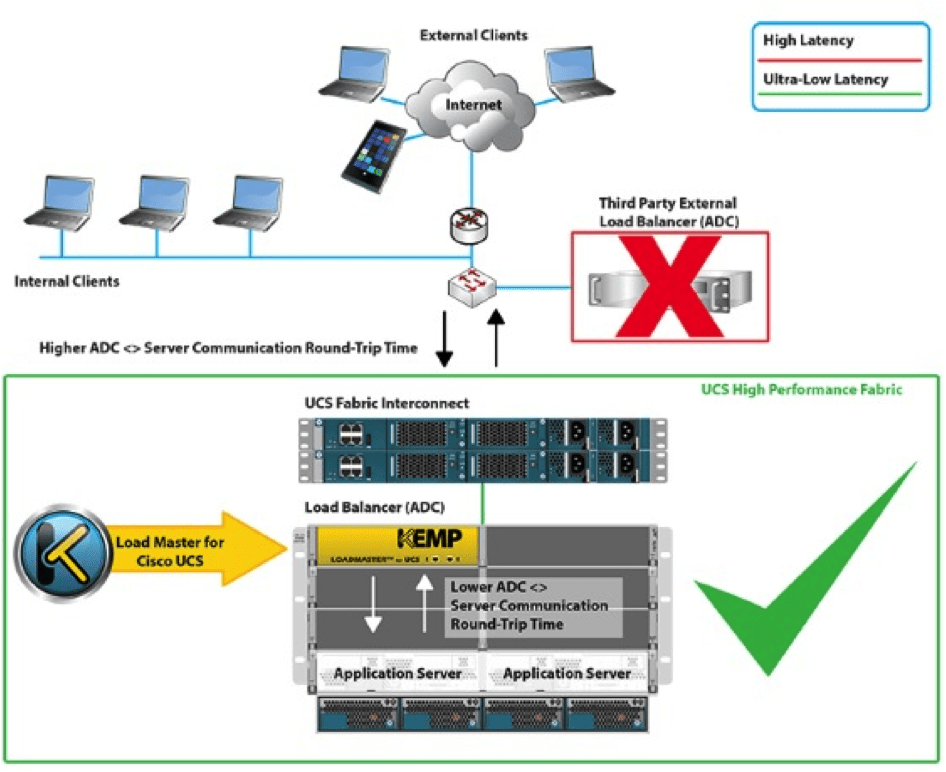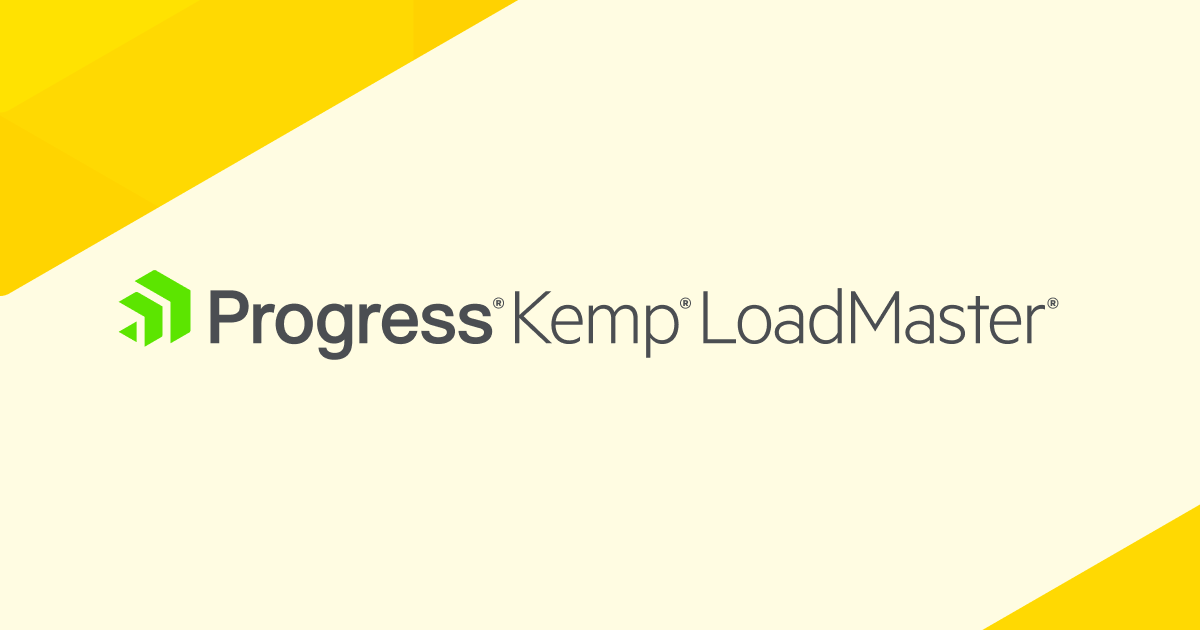By Atchison Frazer, CMO, KEMP Technologies
As we approach Cisco Live ANZ in Melbourne, in which KEMP Technologies is a proud exhibition sponsor, it’s a good time to shine the spotlight on the only load balancer software that runs in a high performance “bare metal” format on the Cisco UCS platform.
And what better way to do that then highlight what someone in the know at Cisco had to say, in the blog: “LoadMaster: a load balancing solution that leverages the UCS architecture,” by Eric Debray with Cisco France. For those of you fluent in French, you can view the blog in its entirety, but those of you who don’t here are my highlights:
Loadmaster for the UCS solution
Among ADC vendors, [only] KEMP offers the following [diagram showing how] “LoadMaster for UCS” takes full advantage of the native architecture of the UCS server solution. “LoadMaster for UCS” will [run] in the form of [bare metal] software, which is installed on a UCS blade server blade (thus, behind the fabric interconnect). [LoadMaster for UCS] runs in all types of hypervisors: VMware ESX / ESXi, VMware player (and Fusion), KVM, Oracle VirtualBox, HyperV, XEN, and others.

By integrating within the UCS architecture, LoadMaster for UCS allows:
- Greater proximity between servers and applications. LoadMaster is as close as possible to the servers on which it will distribute the application load . It ensures a minimum latency versus other load balancing solutions placed outside [the UCS] architecture Interconnect Fabric . [With LoadMaster for UCS] Latency is minimized for maximum performance.
- Accelerating communication between servers and applications: The integration of LoadMaster into the UCS fabric enables faster communication between servers and applications that perform front-end load balancer services without adding additional latency or limitations imposed by traditional Layer 2 infrastructure.
- A better use of bandwidth: There is no need for traffic crossing infrastructure at Layer 2 [with LoadMaster]; available bandwidth can be dedicated to other traffic .
- Growth and scalability: With the integration [of LoadMaster] into factory-grade UCS blades, if the application [requires] changing loads, then users can simply move the function of load balancing to other blades within UCS with more powerful processors. A ” Pay-as-you-Grow ” solution is possible because KEMP offers licenses for 6, 16 or 32 cores.
- Reduced costs: LoadMaster integration allows administrators to use the UCS infrastructure in place without the need to acquire a specific infrastructure or dedicated appliance, since UCS will support and manage load balancer changes.
- Quick Setup: ISO KEMP (bare metal software) installs in less than 10 minutes.
Mr. Debray adds that “Loadmaster for UCS” also allows for Cisco partners to make comparable margins, given that KEMP LoadMaster is part of the Cisco SIP program.
So, here’s a call to action for Cisco UCS partners in the Asia-Pacific theatre: Visit KEMP at Cisco Live ANZ 2014 in Melbourne and let’s prove the efficacy of this innovative model!
Atchison Frazer is CMO of KEMP, and formerly director of global enterprise marketing for Cisco Services.

